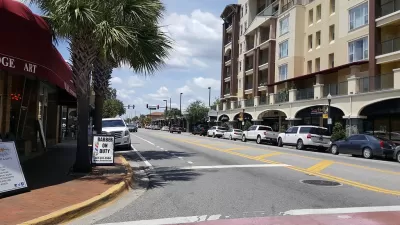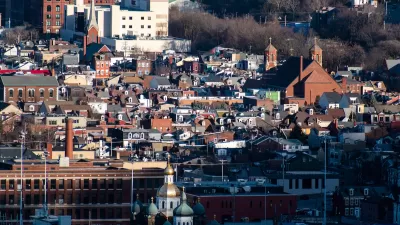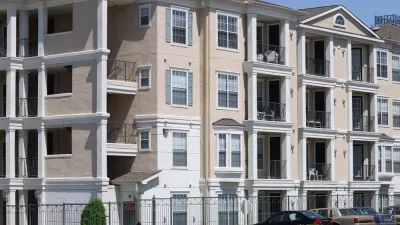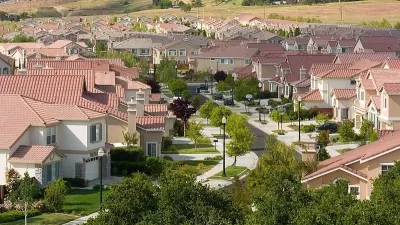New research shows that reducing wasteful use of street space and eliminating overly wide streets would increase opportunities for housing development and higher density.

A report in the Journal of the American Planning Association claims that the excessive width of many U.S. streets constrains the potential for increased population density. According to the report, "street design manuals ignore the fact that the more valuable the land, the narrower the road should be." Street design undervalues street space, writes Jean Dimeo, "whereas residential and commercial rents and sale prices make many metropolitan regions increasingly unaffordable." Minimum street widths, like minimum parking requirements, cripple a city's ability to develop more housing and increase density. "In the most expensive county in the data set—Santa Clara (CA)—narrowing the right-of-way to 16 ft would save more than $100,000 per housing unit through reduced land consumption."
Report author Adam Millard-Ball, an associate professor of urban planning at the University of California, Los Angeles, outlines suggestions for reducing wasteful use of street space and making room for more housing. These include reducing some low-volume roadways to "'yield streets,' with a single bidirectional lane and passing places," eliminating street-width requirements, and selling excessive right-of-way to developers. "Rather than requiring a land owner to provide a portion of the property for the street, a city could increase inclusionary housing requirements, require some land to be protected as natural habitat, or levy impact fees for contributions to parks, specialized firefighting equipment and public services."
FULL STORY: Want More Affordable Housing? Try Building Narrower Streets

Maui's Vacation Rental Debate Turns Ugly
Verbal attacks, misinformation campaigns and fistfights plague a high-stakes debate to convert thousands of vacation rentals into long-term housing.

Planetizen Federal Action Tracker
A weekly monitor of how Trump’s orders and actions are impacting planners and planning in America.

San Francisco Suspends Traffic Calming Amidst Record Deaths
Citing “a challenging fiscal landscape,” the city will cease the program on the heels of 42 traffic deaths, including 24 pedestrians.

Half of Post-Fire Altadena Home Sales Were to Corporations
Large investors are quietly buying up dozens of properties in Altadena, California, where a devastating wildfire destroyed more than 6,000 homes in January.

Opinion: What San Francisco’s Proposed ‘Family Zoning’ Could Really Mean
Mayor Lurie is using ‘family zoning’ to encourage denser development and upzoning — but could the concept actually foster community and more human-scale public spaces?

Jacksonville Launches First Autonomous Transit Shuttle in US
A fleet of 14 fully autonomous vehicles will serve a 3.5-mile downtown Jacksonville route with 12 stops.
Urban Design for Planners 1: Software Tools
This six-course series explores essential urban design concepts using open source software and equips planners with the tools they need to participate fully in the urban design process.
Planning for Universal Design
Learn the tools for implementing Universal Design in planning regulations.
Gallatin County Department of Planning & Community Development
Heyer Gruel & Associates PA
JM Goldson LLC
City of Camden Redevelopment Agency
City of Astoria
Transportation Research & Education Center (TREC) at Portland State University
Jefferson Parish Government
Camden Redevelopment Agency
City of Claremont





























